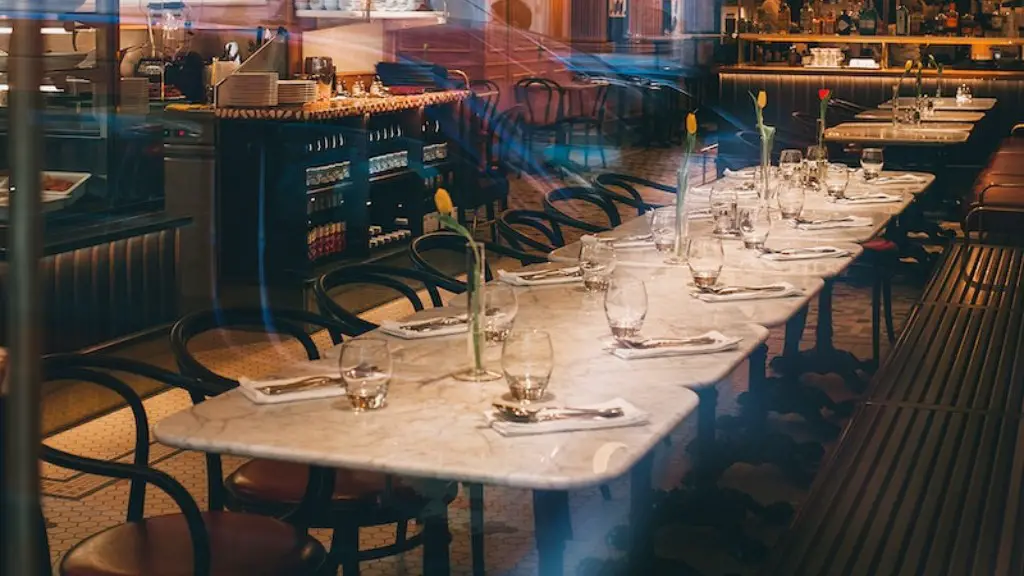Eating out has become a national pastime. According to the National Restaurant Association, there were approximately 660,000 restaurants in the United States in 2017, grossing over $780 billion in sales.1 That number is only expected to grow, as the industry is projected to exceed $1 trillion in sales by 2026.2
For those looking to get in on this booming industry, starting a small restaurant can be a great option. But with any new business venture, there are certain key steps that must be taken in order to be successful. This guide will outline how to open a small restaurant, from writing a business plan to picking the perfect location to debut your new eatery.
Opening a small restaurant is a huge undertaking. You will need to have a clear concept for your business, find the right location, acquire financing, build out your space, hire staff, and develop marketing and operations plans. While it may seem daunting, taking the time to do your planning and research up front will pay off in the long run. Here are a few tips to help you get started:
1. Define your concept. What type of restaurant do you want to open? What kind of menu will you serve? What is your target market?
2. Find the right location. Consider factors like foot traffic, parking, competition, and zoning regulations.
3. Acquire financing. You will need to start raising capital to fund your venture.
4. Build out your space. Find a contractor and create a budget for build-out and equipment costs.
5. Hire staff. Start interviewing and hiring cooks, waitstaff, and front-of-house personnel.
6. Develop marketing and operations plans. Create a strategy for promoting your restaurant and figure out how you will run day-to-day operations.
What is the minimum cost to start a restaurant?
There are a number of factors that can affect the overall cost of opening a restaurant in 2021. Depending on your location, equipment, furniture, and rent, the average startup cost can range from as little as $175,000 to well over $700,000. Keep in mind that these costs can vary greatly depending on the type of restaurant you’re looking to open. If you’re looking to open a high-end dining establishment, you can expect to incur significantly higher costs than if you were to open a more casual eatery. When budgeting for your restaurant, it’s important to account for all potential costs so you can ensure you have the necessary funds to get your business up and running.
If you’re looking to start a ghost kitchen, you can expect to spend anywhere from $10,000 to $50,000 on startup costs. However, in some cities, you may be able to find providers who offer options for less than $10,000. Keep in mind that the exact cost will vary depending on the size and scope of your operation.
Can you make money with a small restaurant
Yes, restaurants are profitable, but they have low profit margins. Profitability depends on many factors including the size and type of restaurant, as well as economic ones. It takes an average of two years for a new restaurant to turn a profit.
In order to open a restaurant in Ohio, you will need to obtain a business license, a certificate of occupancy, a food handler’s license (also known as a food service license), a seller’s permit, and a liquor license permit. You will also need to obtain a food facility health permit and a building health permit.
Do you need a Licence to run a restaurant?
Registering your restaurant with the local authority is a vital step in getting your business up and running. It’s quick, easy and best of all, free! Make sure you do it at least 28 days before you open your doors to the public to avoid any delays or problems.
There are four main types of costs that cut into a restaurant’s bottom line: food cost, liquor cost, labor cost, and operational cost. Here are some tips on how to manage these costs:
1. Food cost: Make sure you are getting the best possible price for your food ingredients by shopping around and negotiating with suppliers. Also, be careful not to waste food.
2. Liquor cost: Again, get the best possible price for your liquor by shopping around and negotiating with suppliers. Also, be mindful of how much liquor you are using and don’t over-pour drinks.
3. Labor cost: One of the biggest expenses for a restaurant is labor. To help control labor cost, make sure you are scheduling your staff efficiently and not over-staffing your restaurant. Additionally, train your staff well so they are productive and efficient.
4. Operational cost: There are many expenses that fall under the category of operational cost, such as rent, utilities, and insurance. To help control these costs, be mindful of what you are spending and look for ways to cut costs where possible.
Do restaurant owners make a lot of money?
The average salary for a restaurant owner can vary greatly depending on several factors, including the location, size, menu offerings, and amenities of the restaurant. In general, however, restaurant owners can expect to earn anywhere from $33,000 to $155,000 per year.
Small restaurants can earn an average profit of $1350 per day. This is a great way to make a good living and support yourself and your family.
What is the normal profit for a restaurant
This means that on average, a restaurant will make $3-$5 profit for every $100 that they make in sales. However, it is important to keep in mind that profit margins can vary greatly from restaurant to restaurant, so this is just a generalization.
There are a few different ways that restaurant owners can get paid. They can earn a salary, take a portion of the restaurant’s profits, or have a combination compensation package that includes both a salary and dividends from business profits. Each option has its own benefits and drawbacks, so it’s important to weigh all of the factors before deciding on the best compensation plan for your restaurant.
What percentage of restaurants fail?
Given the high failure rate in the restaurant industry, it is important to do your research and choose a location carefully. Talk to other restaurant owners, look at demographic data, and make sure you have a solid business plan before opening your doors. Even with the best planning, though, things can still go wrong – so be prepared for the worst and hope for the best.
Running a restaurant is definitely not a piece of cake! With a high failure rate within the first year, it’s evident that many restaurateurs are making mistakes along the way. It’s important to be aware of the signs that a restaurant is failing, in order to make the necessary changes to help it succeed. Some common mistakes that lead to failure include ignoring customers’ needs, poor financial management, and not adapting to change. By being mindful of these things, you can help your restaurant thrive for years to come.
How much does a food license cost in Ohio
You need to have a food service license in order to work in a restaurant in Ohio. The test and license should not cost more than $15. This is to make sure that anyone working in a restaurant can afford to get certified.
If you want to open a restaurant in India, you will need to obtain a food license or FSSAI license. This license is required in order to sell food products in the country. You will also need to obtain an eating house license in order to serve food in your restaurant. If you want to sell liquor in your restaurant, you will need to obtain a liquor license. Other licenses that you may need to obtain include a fire department NOC, GST registration, environmental clearance license, and fire safety license.
Can I sell food I make at home Ohio?
Selling homemade food is fairly simple in Ohio. Home-based business owners do not need permits to get started, and Ohio imposes no cap on annual gross revenue. This makes it a great state for entrepreneurs who want to start a food-based business. There are a few things to keep in mind, however, such as labeling requirements and food safety guidelines. But overall, Ohio is a friendly state for those looking to sell homemade food.
If you want to sell food from home, you need to take care of some legal aspects first. You need to register with environmental health and HMRC. Without taking out the necessary training or paperwork, you will be fined heavily.
Can I run a resturant on my home
Before starting any food business, it is important to check for the licenses and permissions you need from the relevant authorities. Without these licenses, you could run into trouble with the law. FSSAI license is one of the key requirements for any food business. You will also need a shop act license, health trade license, GST registration, and trademark registration for your brand to get started with your food business from home.
varies depending on the menu, location, and other factors.
Warp Up
1. Decide on the concept for your restaurant. Will it be a casual diner or a more formal affair?
2. Choose a location. A good location is important for a successful restaurant.
3. Create a business plan. This will help you determine the necessary start-up costs and funding.
4. Obtain the necessary licenses and permits.
5. Hire a experienced staff. This includes a chef, waitstaff, and managers.
6. Purchase restaurant equipment and supplies.
7. Promote your restaurant. Make sure potential customers know about your new business.
If you’re thinking of opening a small restaurant, there are some important things to keep in mind. First, you’ll need to choose a good location. Second, you’ll need to have a clear concept for your restaurant. Third, you’ll need to create a detailed business plan. fourth, you’ll need to raise the necessary capital. and fifth, you’ll need to find a good team to help you run the place. With careful planning and execution, opening a small restaurant can be a great way to achieve your entrepreneurial dreams.




